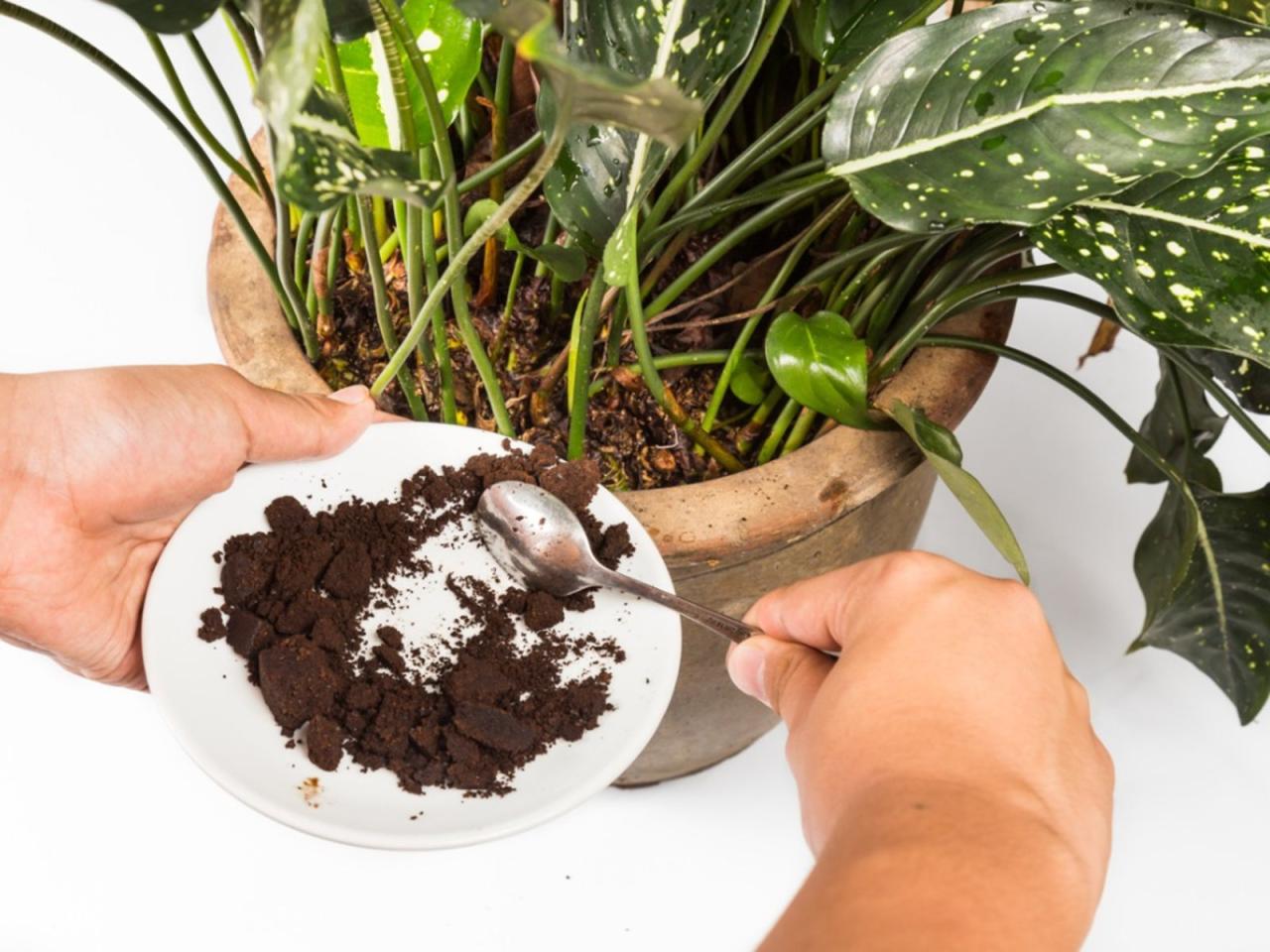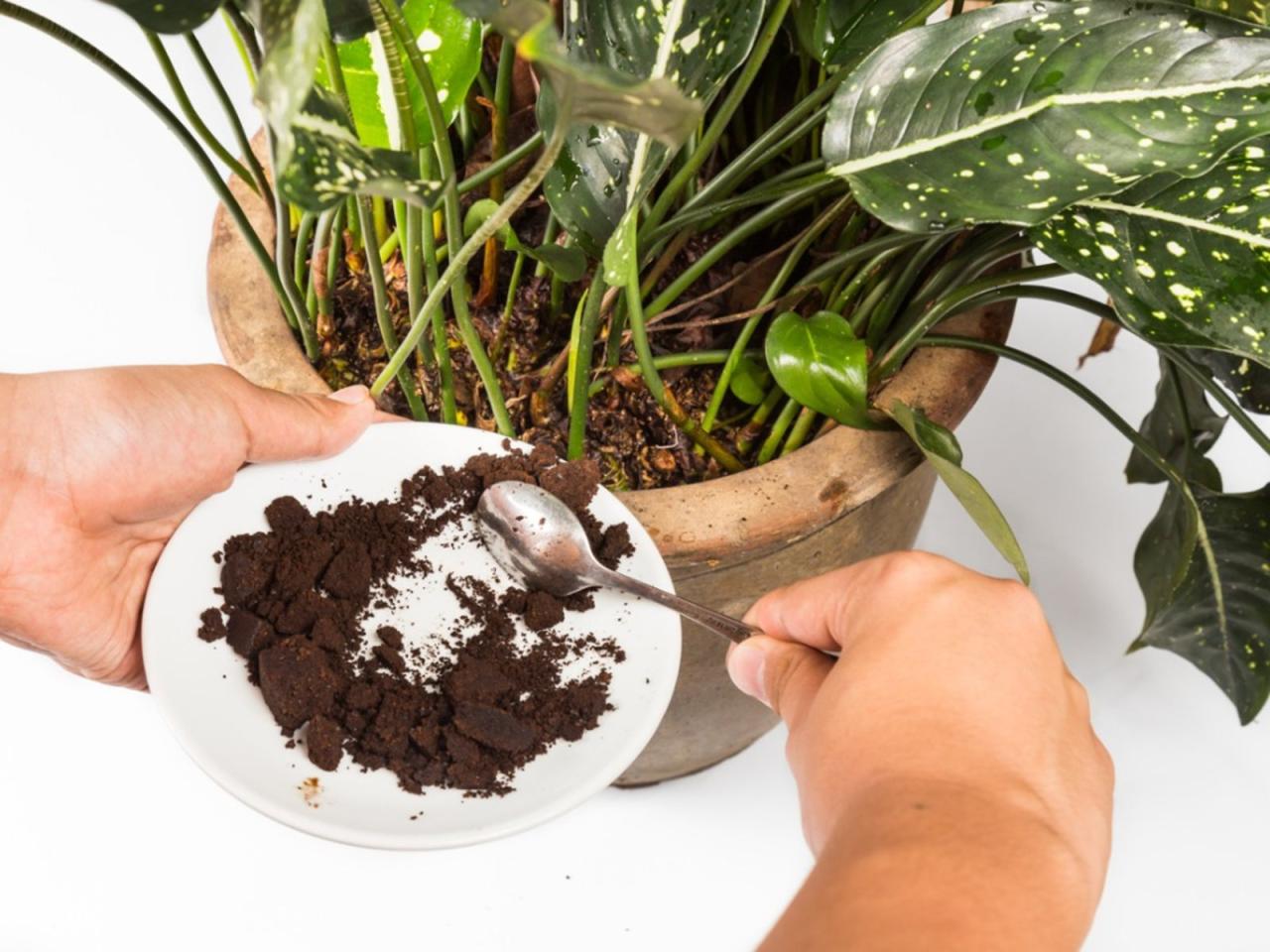How to Use Coffee Grounds for Seedling Growth: A cup of coffee can do more than just wake you up in the morning; it can also provide a boost to your garden! Coffee grounds, a readily available byproduct of our daily caffeine fix, offer a surprising array of benefits for seedling growth.
From enriching the soil with essential nutrients to deterring pesky pests, coffee grounds can transform your seedlings into thriving plants.
This guide will delve into the multifaceted ways coffee grounds can enhance seedling growth, providing practical tips and insights to help you unlock the potential of this natural resource. We’ll explore the benefits of coffee grounds, guide you through preparing them for use, and demonstrate various methods for incorporating them into your seedling routine.
Benefits of Coffee Grounds for Seedlings
Coffee grounds are a natural and readily available resource that can significantly benefit seedling growth. They provide essential nutrients, improve soil structure, and act as a natural pest deterrent, making them a valuable addition to any gardener’s toolkit.
Nutritional Benefits, How to Use Coffee Grounds for Seedling Growth
Coffee grounds are rich in nutrients that are essential for healthy seedling development. They are particularly high in nitrogen, phosphorus, and potassium, which are known as the “big three” macronutrients. Nitrogen promotes vigorous leaf growth, phosphorus is crucial for root development and flower production, and potassium aids in overall plant health and disease resistance.
Soil Structure and Aeration
Coffee grounds improve soil structure by adding organic matter, which helps retain moisture and improves drainage. This leads to better aeration, allowing roots to breathe and grow more efficiently. The presence of coffee grounds can also increase the water-holding capacity of the soil, making it less susceptible to drought.
Pest Deterrence
Coffee grounds can act as a natural pest deterrent, protecting seedlings from common pests like slugs, snails, and ants. The caffeine and other compounds in coffee grounds are believed to repel these pests, keeping them away from your precious seedlings.
Preparing Coffee Grounds for Seedling Growth

Preparing coffee grounds for use with seedlings is a simple process that can provide several benefits for your plants. However, it’s essential to understand the proper techniques to ensure the grounds are beneficial and not harmful to your seedlings.
Using coffee grounds for seedling growth offers numerous benefits, from enriching the soil with nutrients to deterring pests. One common pest that can plague seedlings is fungus gnats, which are attracted to the moist soil. Fortunately, there are natural ways to combat these pesky insects, such as using a layer of diatomaceous earth or employing a simple homemade trap.
For a more detailed guide on effectively eliminating fungus gnats, check out this article on How to Get Rid of Gnats in Plants Naturally. Once you’ve successfully tackled the gnat problem, you can focus on nurturing your seedlings with the added benefits of coffee grounds, promoting healthy growth and a thriving garden.
Composting or Aging Coffee Grounds
Composting or aging coffee grounds before use is crucial to reduce their acidity. Fresh coffee grounds are highly acidic, which can hinder the growth of many seedlings. Composting allows beneficial microbes to break down the coffee grounds, reducing their acidity and transforming them into a nutrient-rich amendment.
Coffee grounds, rich in nitrogen and other nutrients, can be a valuable addition to your seedling mix. Just like pruning hanging plants can stimulate bushier growth by removing dead or overgrown stems, How to Prune Hanging Plants for Maximum Growth , incorporating coffee grounds into your soil can encourage healthy root development and vibrant foliage in your young plants.
- Composting:Mix coffee grounds with other organic materials like leaves, grass clippings, and food scraps in a compost bin. Turn the compost regularly to ensure proper aeration and moisture. After several months, the coffee grounds will have composted and can be safely used in seedling pots or trays.
- Aging:If you don’t have a compost bin, you can age coffee grounds by simply storing them in a container for several weeks. As the grounds age, their acidity will naturally decrease. You can add a small amount of aged coffee grounds to your seedling mix.
The Ideal Ratio of Coffee Grounds to Soil
The ideal ratio of coffee grounds to soil for seedling growth varies depending on the type of plant and the specific soil mix. However, a general guideline is to use a 1:10 ratio of coffee grounds to soil.
For example, you could add one cup of composted coffee grounds to ten cups of potting soil.
- Too much coffee groundscan make the soil too acidic, hindering the growth of seedlings.
- Too little coffee groundswill not provide significant benefits to the seedlings.
Methods for Using Coffee Grounds
Coffee grounds can be incorporated into your gardening routine in various ways to benefit your seedlings. Let’s explore some of the most effective methods for using coffee grounds to enhance seedling growth.
Incorporating Coffee Grounds into the Potting Mix
Adding coffee grounds directly to the potting mix provides a slow-release source of nutrients for your seedlings. Coffee grounds are rich in nitrogen, phosphorus, and potassium, essential elements for healthy plant growth.
- Mix coffee grounds with potting mix:For every 10 gallons of potting mix, add about 1 cup of coffee grounds. You can also use a smaller ratio if you prefer. This method ensures the coffee grounds are evenly distributed throughout the potting mix, allowing the seedlings to access the nutrients gradually.
- Ensure proper drainage:While coffee grounds improve soil structure, excessive amounts can lead to compaction, hindering drainage. To avoid this, ensure the potting mix is well-drained by adding perlite or vermiculite to improve aeration.
- Monitor pH levels:Coffee grounds are slightly acidic, so it is essential to monitor the pH levels of your potting mix. If you are growing plants that prefer a neutral pH, adjust the pH by adding lime or other pH-adjusting amendments.
Using Coffee Grounds as a Mulch
Coffee grounds can be used as a mulch, providing a protective layer over the soil surface. This layer helps retain moisture, suppress weeds, and regulate soil temperature.
- Apply a thin layer:Spread a thin layer of coffee grounds around the base of your seedlings, ensuring not to cover the stems. A layer about 1/2 inch thick is sufficient.
- Avoid excessive application:While coffee grounds are beneficial, excessive application can create a dense layer that hinders air circulation and drainage. Monitor the mulch layer and adjust it as needed.
- Consider other mulch options:Coffee grounds can be combined with other organic mulches like wood chips, straw, or shredded leaves for enhanced benefits.
Using Coffee Grounds as a Seed Starter
Coffee grounds can be used as a seed-starting mix, providing a nutrient-rich environment for germination.
- Combine with other ingredients:Mix coffee grounds with other components like peat moss, vermiculite, or coconut coir to create a balanced seed-starting mix.
- Ensure proper drainage:Coffee grounds alone can be too dense, hindering drainage. Add a sufficient amount of perlite or vermiculite to improve aeration and drainage.
- Adjust pH if needed:Coffee grounds are slightly acidic, so if you are starting seeds that prefer a neutral pH, adjust the pH by adding lime or other pH-adjusting amendments.
Considerations and Precautions
While coffee grounds offer numerous benefits for seedling growth, it’s essential to be mindful of certain considerations and precautions to ensure optimal results. Using coffee grounds incorrectly can lead to unintended consequences, potentially hindering seedling development.
Soil pH Monitoring
Coffee grounds are naturally acidic, with a pH ranging from 4.5 to 6.5. While this acidity can benefit some plants, excessive application can lower the soil pH to levels unsuitable for most seedlings. Therefore, it’s crucial to monitor the soil pH regularly, especially when using coffee grounds.
Monitoring soil pH allows you to identify any imbalances and adjust accordingly to maintain a healthy growing environment for your seedlings.
Over-Application of Coffee Grounds
While coffee grounds provide valuable nutrients, over-application can have detrimental effects on seedling growth. Excessive amounts can create an overly dense and compacted soil structure, hindering root development and nutrient absorption. This can lead to stunted growth, reduced vigor, and even plant death.
To avoid over-application, use coffee grounds sparingly and incorporate them gradually into the soil.
Conclusive Thoughts
By embracing the power of coffee grounds, you can unlock a sustainable and eco-friendly approach to nurturing your seedlings. Remember, moderation is key, and by carefully incorporating coffee grounds into your gardening practices, you can witness the transformative impact they have on your young plants.
So, the next time you enjoy a cup of coffee, don’t throw away the grounds; instead, give them a new life as a valuable resource for your flourishing garden.
FAQ Compilation: How To Use Coffee Grounds For Seedling Growth
Can I use fresh coffee grounds directly on my seedlings?
It’s best to compost or age coffee grounds before using them directly on seedlings. Fresh grounds can be too acidic and may hinder growth.
How often should I add coffee grounds to my seedlings?
Start with a small amount of coffee grounds and gradually increase as needed. Monitor your seedlings’ growth and adjust accordingly.
Are there any specific types of seedlings that benefit most from coffee grounds?
Coffee grounds are beneficial for a wide range of seedlings, including tomatoes, peppers, and beans. They are particularly helpful for acid-loving plants like blueberries and azaleas.
